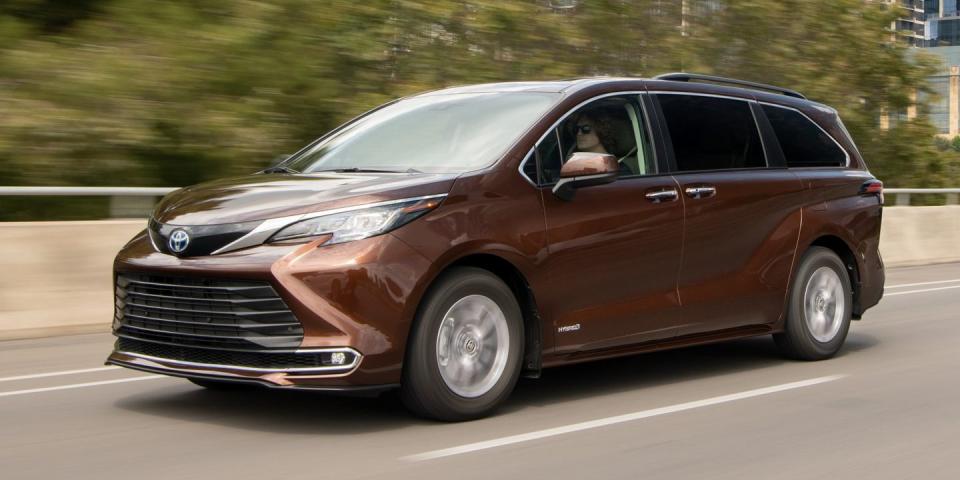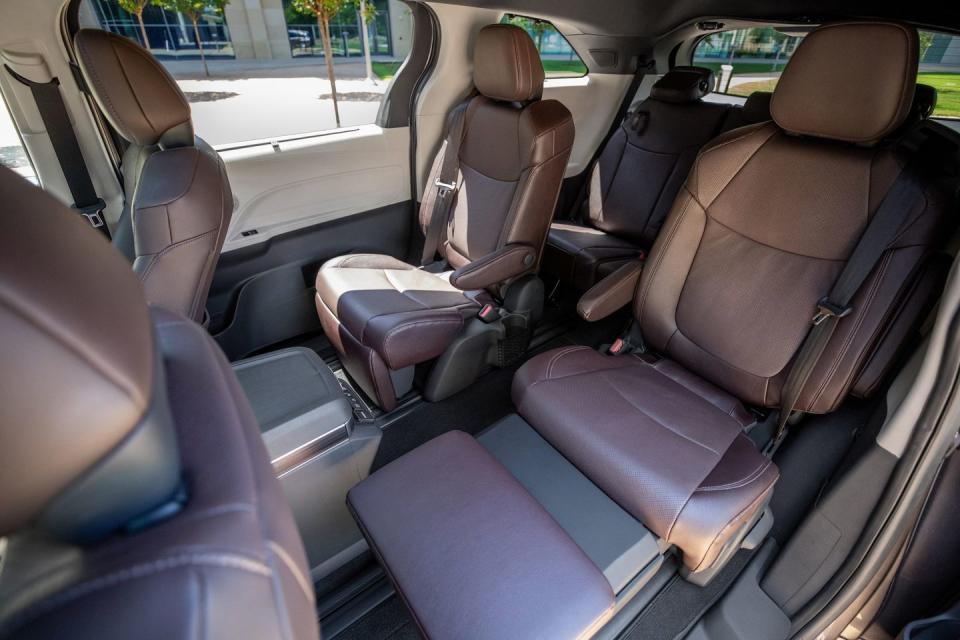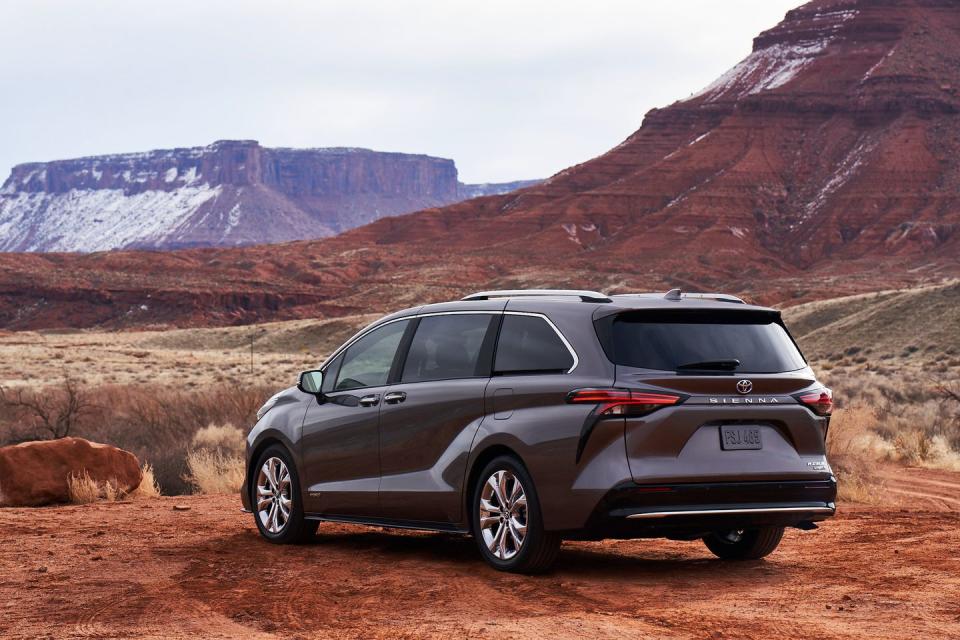Tested: 2021 Toyota Sienna Sheds Minivan Stereotypes

The new 2021 Toyota Sienna appears to want to undo the stigma that minivans have suffered for decades. To trick the eye into thinking the Sienna is an SUV, the hood has been raised and the base of the A-pillar is pulled back. The sheetmetal around the rear wheels bulges and connects to a bone line that runs along the side of the van. An aggressive-looking minivan might not be something anyone asked for, but we'll take it.
Bolder on the Outside, (Mostly) Better on the Inside
The sliding doors still announce that it's your turn to carpool, but the Sienna's new interior is far more modern and driver-focused than its predecessor's dated design. A bridgelike floating center console flows out of the dashboard and leaves a large and practical storage area below. Four of the Sienna's 18 cupholders are housed atop the console, and we like that Toyota kept a real shifter rather than adopting the fashionable and unnatural rotary-knob and push-button setups found on the Chrysler Pacifica and Honda Odyssey.

Behind the front seats, the new Sienna stops pretending it's not a minivan. There's comfortable seating for seven—or eight with the stowing center seat—and legroom has increased in the second and third rows. The second-row captain's chairs that recline and look like they're out of a dentist's office slide back and forth more than before and provide limo-like accommodations. Those chairs don't come out nor do they fold into floor, which limits how much you can pack into the Sienna. The last-generation Sienna had removable seats and a massive 150 cubic feet with the third row stowed and the second row removed, far more than the new Sienna's 101 cubic feet. Cargo volume behind the second and third rows is down by 12 and five cubes, respectively. Toyota has decreased the effort needed to fold and unfold the third row into the floor, and we can confirm that the operation is nearly effortless.
More Refined on the Road, More Efficient at the Gas Pump
Following the built-in vacuum trend, there's a built-in vacuum, and like the original Toyota Van from 1984, there's a small refrigerator in the center console. The Sienna is the only minivan with foot-activated power sliding doors. Kick under the door, and the door slides open. A full roster of driver-assistance technology is standard, including adaptive cruise control and lane-keeping assist.

The Sienna has moved to Toyota's TNGA-K platform, an architecture that also underpins the Highlander and RAV4. More solid than before and with a 1.2-inch longer wheelbase, the Sienna also gets a new multilink rear suspension that replaces a less sophisticated twist-beam axle. Handling is more secure, and the steering is quicker and more precise.
At the track, our all-wheel-drive Sienna Platinum posted an identical 0.79 g on the skidpad as a 2019 Sienna AWD we tested. The new one's stopping distance from 70 mph also grew by five to 188 feet versus its predecessor, and we noticed moderate brake fade. Still, minivan shoppers will likely care more about the Sienna's newfound refinement than its at-the-limit handling.
Customers are also likely to care a lot about the Sienna's fuel economy, which is why the Sienna is now exclusively a hybrid. In place of the old 296-hp 3.5-liter V-6 is a 2.5-liter inline-four that couples with two electric motors to make 245 horsepower. Nearly a second slower to 60 mph than the V-6 (7.7 seconds versus 6.8), the hybrid system delivers strong-feeling acceleration from low rpm. The hybrid's fuel economy is considerably better than its predecessor's 19 mpg city, 27 highway, and 22 combined. The front-wheel-drive hybrid is EPA rated at up to 36 mpg in all three metrics, which is also considerably higher than its V-6-powered rivals. The all-wheel-drive model loses a single mile per gallon in the city and combined ratings. In our hands, we average 29 mpg.

The Sienna still tows up to 3500 pounds, and all-wheel drive remains an option, but instead of a driveshaft, there's an electric motor powering the rear axle. The Sienna's 1.9-kWh nickel-metal-hydride battery is packaged under the front seats to avoid compromising cargo space. When sufficiently charged and put in EV mode, the battery allows for pure electric driving for short distances and low speeds.
Final Word
Toyota has slightly rejiggered the Sienna's model lineup, which now starts with the base LE and moves up to the XLE, XSE, Limited, and the top-spec Platinum. Base prices remain relatively close to the outgoing versions and range from $35,635 for the LE up to $51,635 for an all-wheel-drive Platinum like our test car. Although the new Sienna might not change the public's perception about minivans as much as Toyota's marketing department hopes, it has the style and substance to challenge the refreshed Chrysler Pacifica, the facelifted Honda Odyssey, and the upcoming Kia Sedona.
You Might Also Like

 Yahoo Autos
Yahoo Autos 